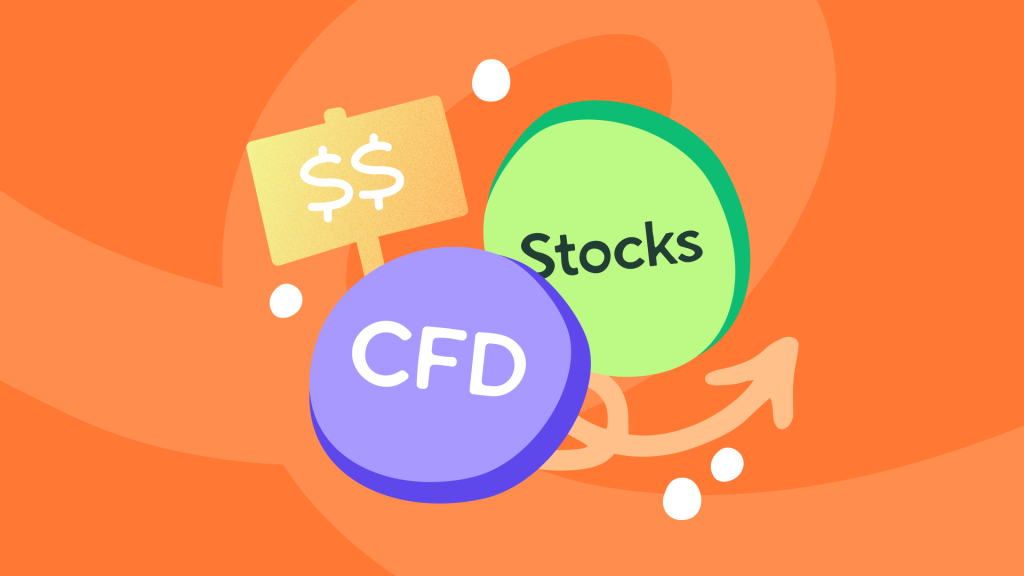CFD (Contract for Difference) is an agreement between two parties, usually referred to as “buyer” and “seller,” to pay each other the difference between the opening price and closing price of the traded instrument. CFDs are a very popular trading instrument in financial markets. They provide traders with the ability to profit from the price movements of an asset without physically owning it.
Main differences between CFDs on stocks and stocks
There are at least seven of them. Let’s look at them in order.
Ownership of the asset
When buying regular stocks, the trader becomes the owner of the physical asset. At the same time, when trading CFDs on stocks, the trader does not acquire the physical asset but enters into an agreement with the broker.
Multipliers
One of the main advantages of trading CFDs on stocks is the ability to use margin trading. This means that a trader can open a position for a much larger amount than they have in their account. For example, if a trader has $100 in their account, they can open a position of $1,000, using a 10x multiplier.
Long and short positions
When trading CFDs on stocks, a trader can profit from the price movements of an asset when it rises or falls. This is different from buying stocks, where a trader can only profit when the price goes up. This provides more opportunities for profit and loss protection.
Flexibility Trading
CFDs on stocks are more flexible than buying stocks. Traders can open and close positions faster than when buying and selling stocks, which provides more opportunities for profit. In addition, with CFDs, it is possible to combine trading stocks, indices, and other instruments, which provides more space for diversification.
Short-term trading
CFDs on stocks are usually traded for a short period of time. Holding a position for years is not suitable for everyone. CFDs are a great option for short-term traders who prefer to trade within a day, week, or a few weeks.
Minimum deposit
To start trading CFDs on stocks, a significantly smaller minimum deposit is required than to buy stocks. This makes CFD trading available to a wider range of traders. On the Movo platform, it is possible to trade stocks of the most popular companies in the world for as little as $5.
Dividends and Voting Rights
Shareholders have the right to vote at the shareholder meeting. To have the right to vote, however, one must own a large enough number of shares. This percentage varies for each company, from 5% and up. The average trader cannot afford such large portfolio volumes. However, dividends are the main downside of trading CFDs on stocks. Traders do not have the right to receive dividends when trading CFDs on stocks.
Conclusion
It should be noted that CFDs on stocks and regular stocks represent different types of investing and trading in financial markets. Trading CFDs on stocks may be more attractive for short-term traders who are looking for high liquidity and fast execution of trades. However, this can also lead to significant risks and losses, especially if the trader does not have sufficient knowledge and experience in trading in the markets. On the other hand, stocks are more suitable for long-term investing.
Regardless, before starting to trade, it is important to carefully study all available options and make a decision based on one’s own analysis and risk assessment.
Download the App











